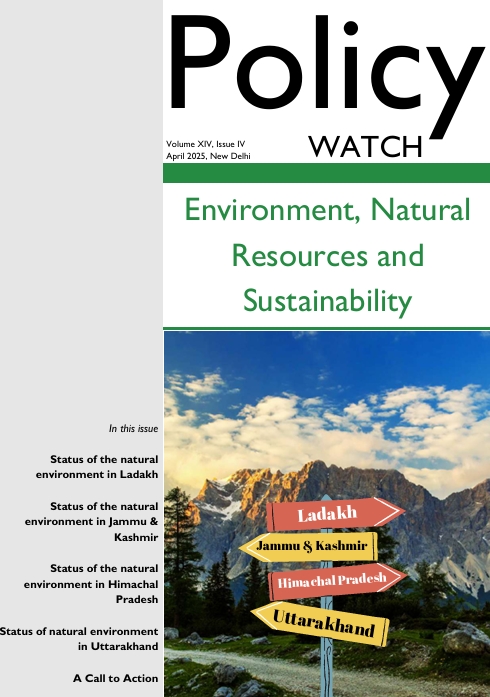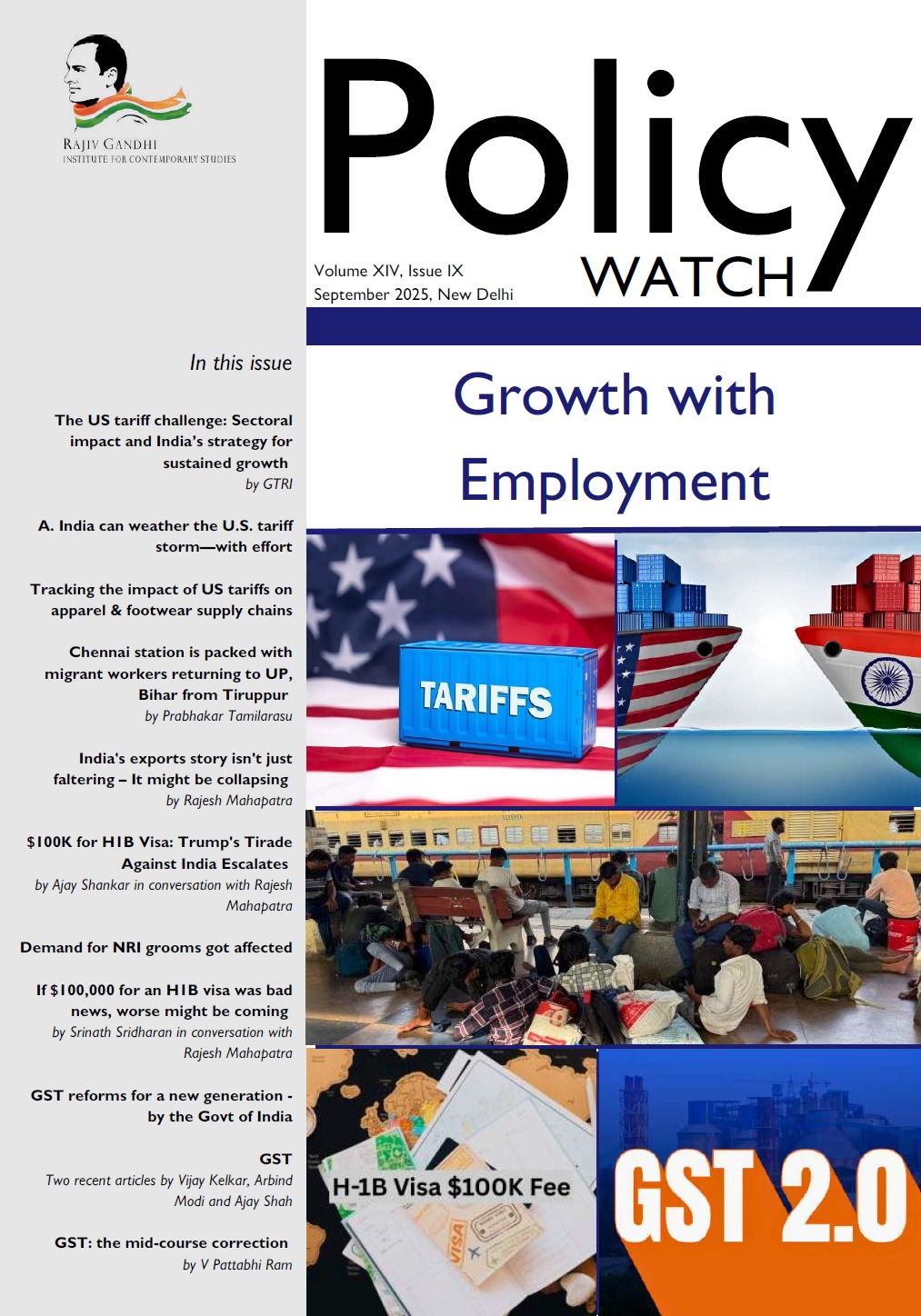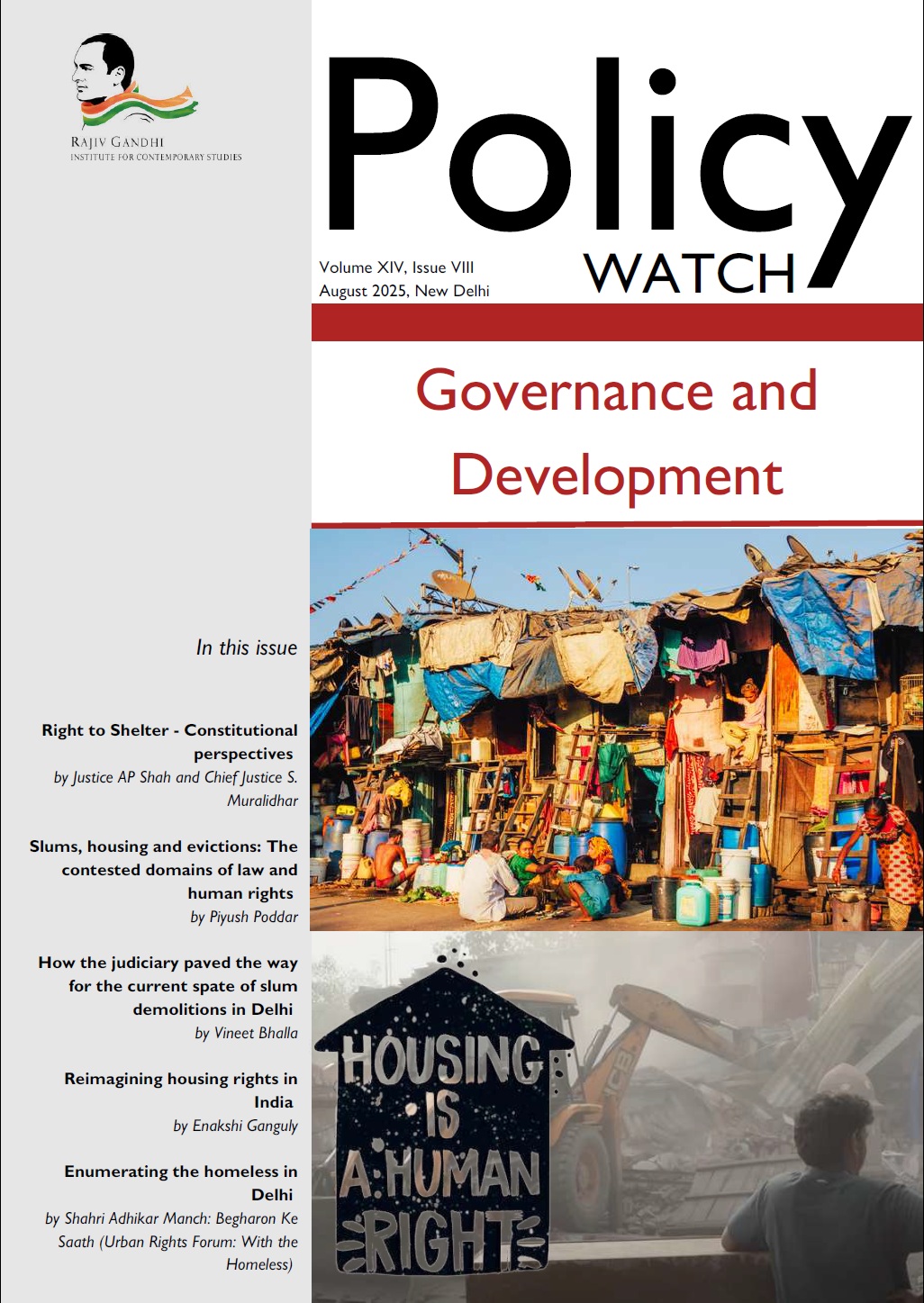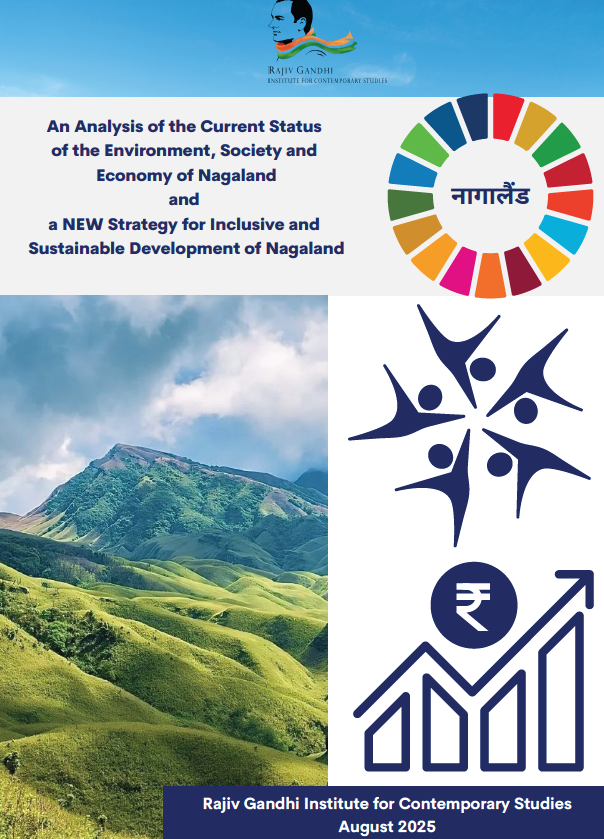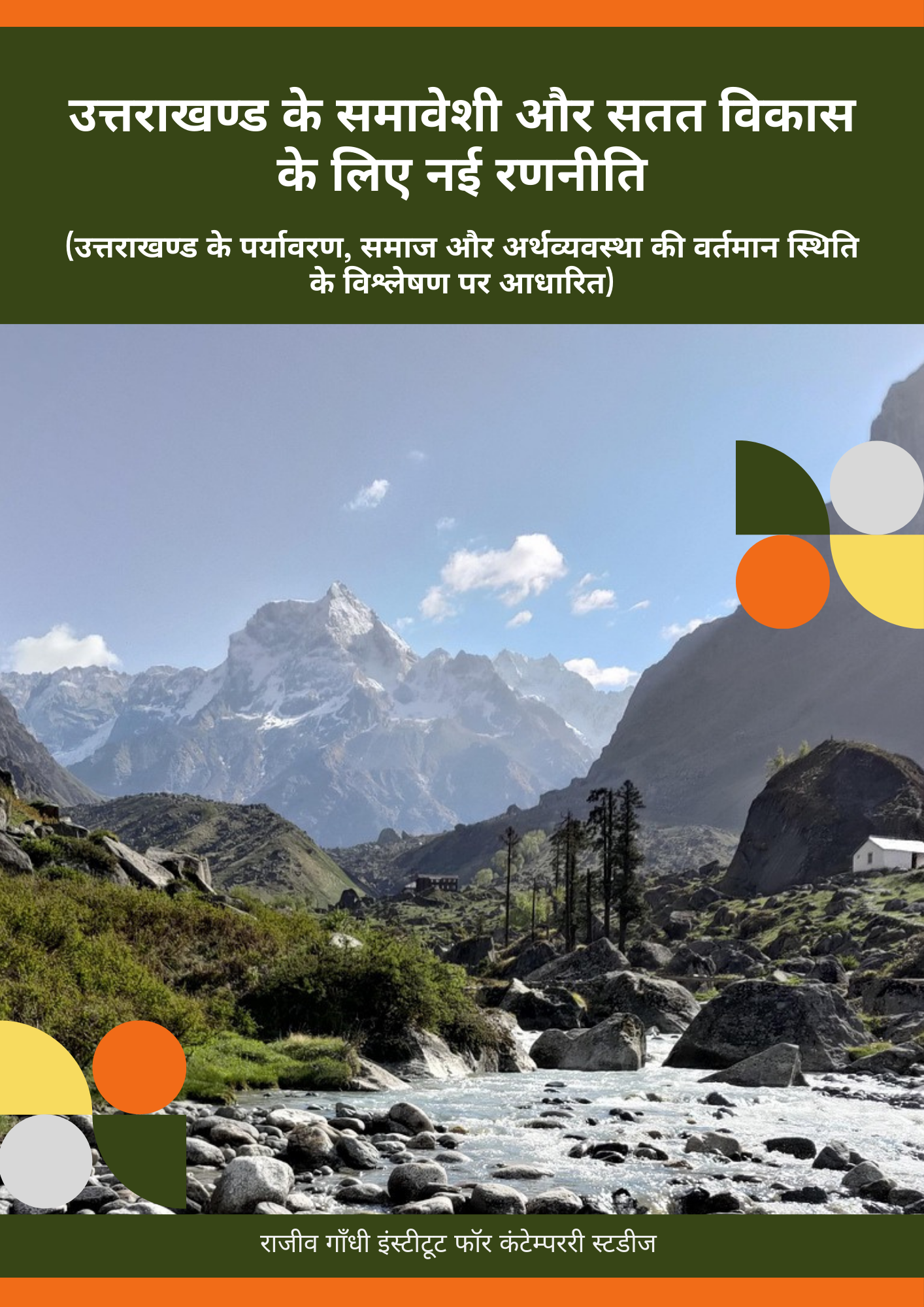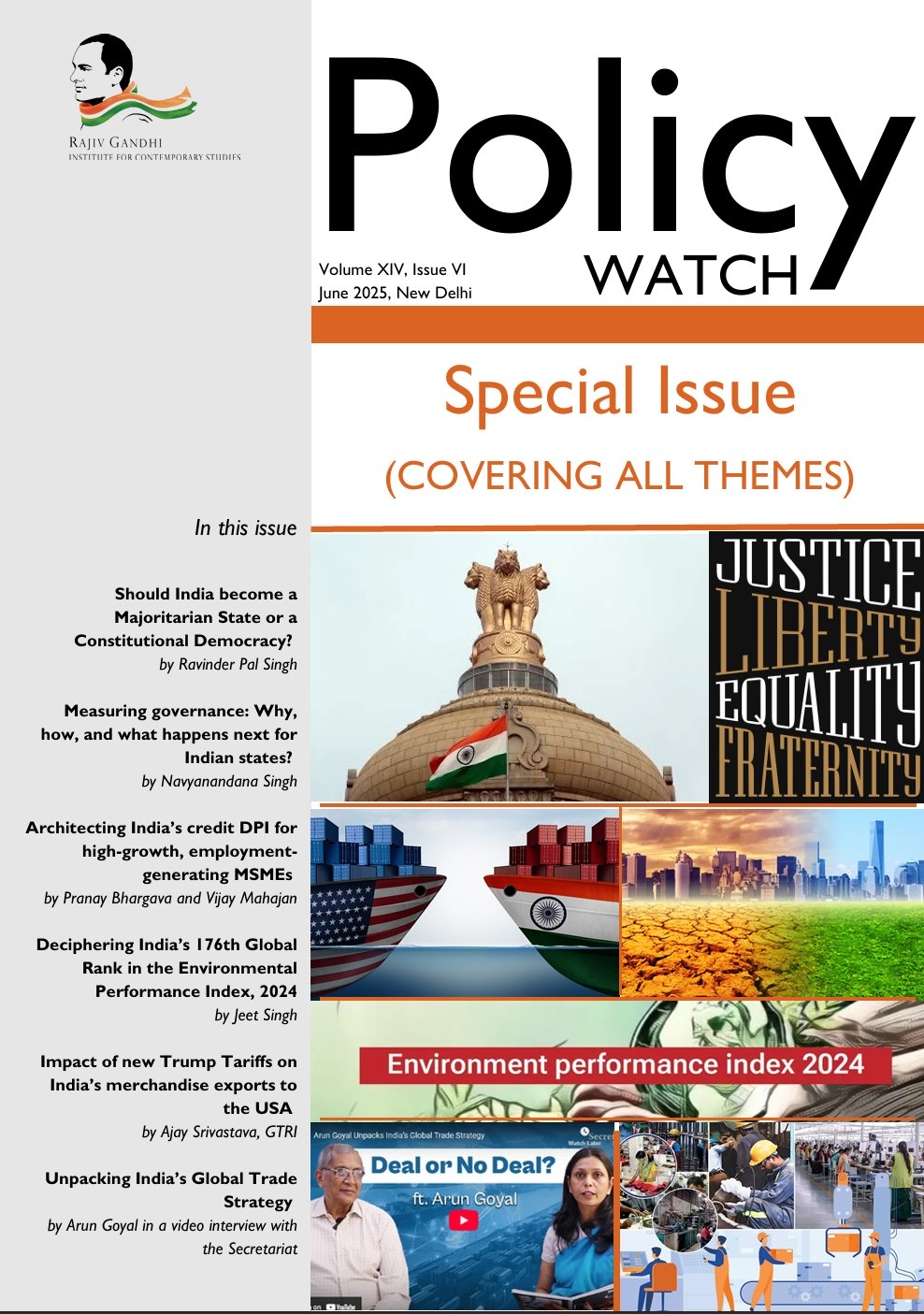This edition presents four articles, all written by RGICS Head of Research, Jeet Singh, examining the natural environment in and two Union Territories (Ladakh and Jammu & Kashmir) and two states (Uttarakhand and Himachal Pradesh) in the western Indian Himalayan region. Spanning over 200,000 sq km within a global biodiversity hotspot, this region shapes the Ganga Yamuna and Indus river basins.
The IPCC’s sixth assessment report notes that the Hindu Kush Himalaya is warming faster than other areas and could lose 60% of its glaciers by 2100. Therefore, four state specific article carried by this issue of policy watch assesses interconnectedness of degradation of natural capitals- water, forest, soil and land with changing climate in the Western Indian Himalaya.
The first article assesses anthropogenic and climatic threats to Ladakh’s water resources, forests, and land. It finds that glacier melt is accelerating, yet snowmelt water is insufficient due to population growth and tourism. Forest cover is minimal, with most forests lying outside officially recorded areas. Soils, already low in micronutrients, now rely on chemical fertilizers for improved yields. The second article on Jammu & Kashmir observes that climate change is severely impacting the territory’s natural, social, and economic wealth. The Climate Change Action Plan reports that most of the glaciers are rapidly degrading. Snowfall has dropped to 0.6 meters from 3 meters over the past 40 years. Other impacts include erratic weather and reduced snowfall, which are harming apple production and rain-fed agriculture
The Himachal Pradesh article explores changes in forest canopy density, land degradation and desertification, landslides, declining soil nutrition, soil erosion, and the drying up of water sources as well as climate change impacting the State’s apple economy. The fourth article on Uttarakhand discusses the ecological services provided by its extensive forests, mountains, rivers, and glaciers to nearly 1 billion people in Uttarakhand and the Gangetic plain. These natural resources are under threat from excessive human pressure and climate change. The article briefly outlines the state of these resources and the major challenges they face.
The final article is a Call to Action, written by the undersigned. It is addressed to five levels of stakeholders: Individuals by themselves; as citizens, as activists, as thinkers and influencers Individuals by joining local community Social Groups; and by individuals joining organised NGOs/Civil Society Institutions Gram Panchayats/Zilla Parishads/Town Wards / Municipalities State and Central Government departments and specialised agencies International Cooperation at the Regional and Global level For each stakeholder, we delineate what needs to be done.
Policy Watch: Environment, Natural Resources and Sustainability – April 2025
Send download link to:

